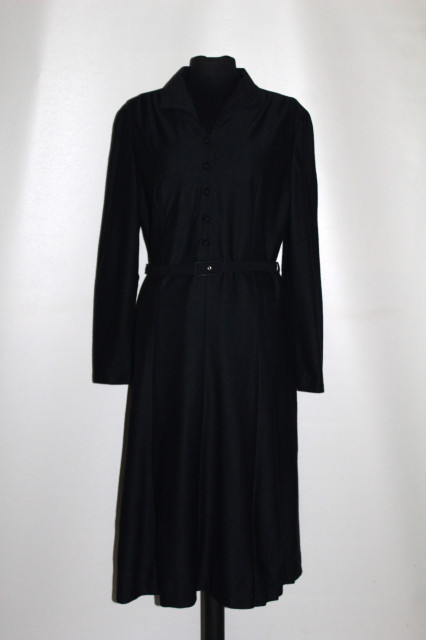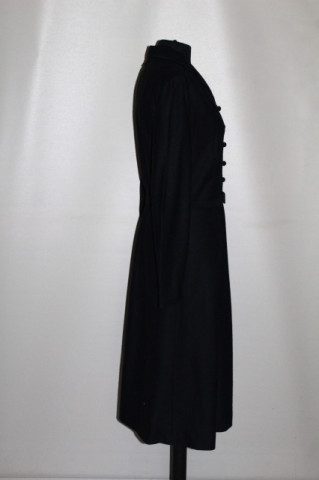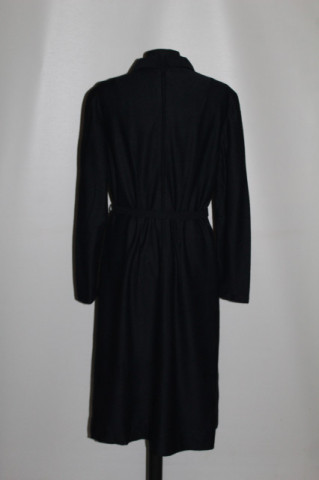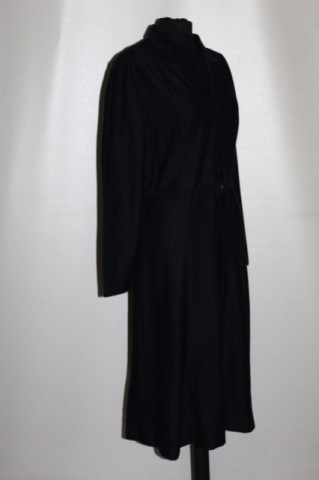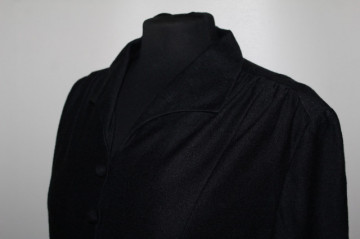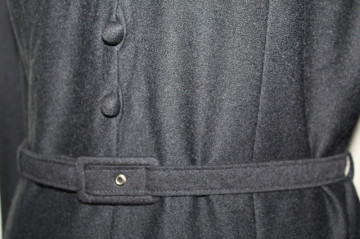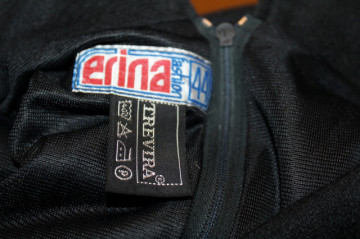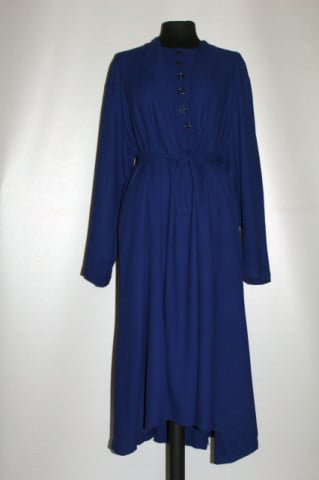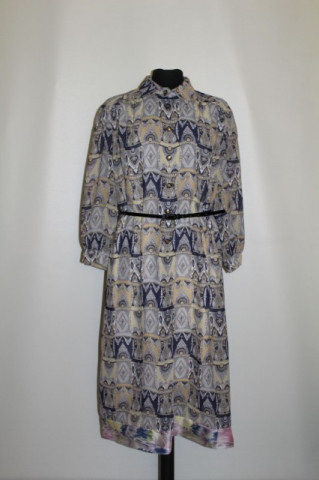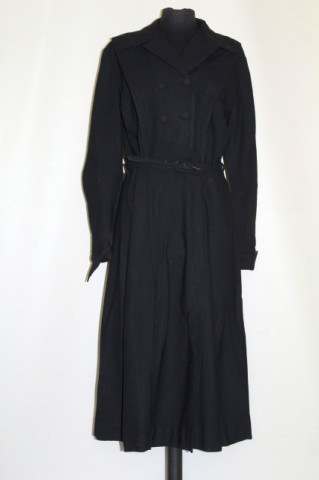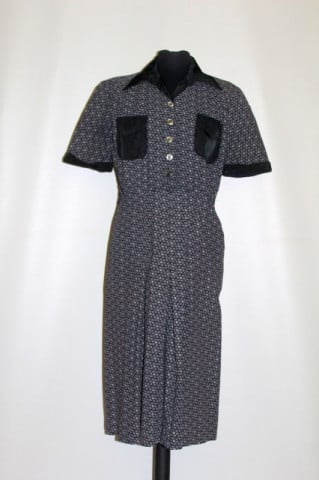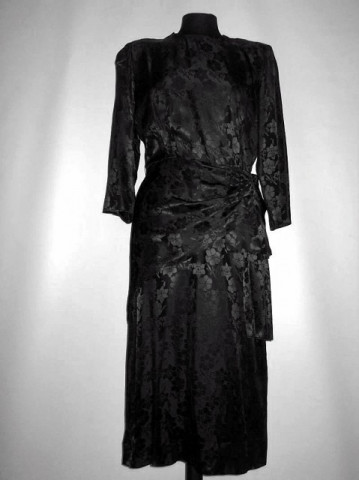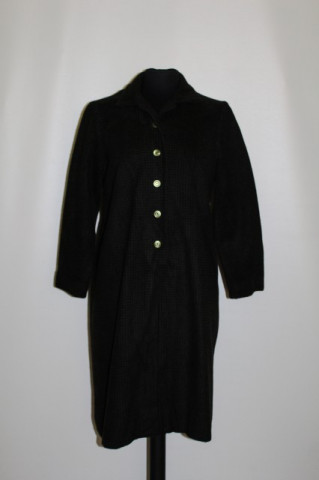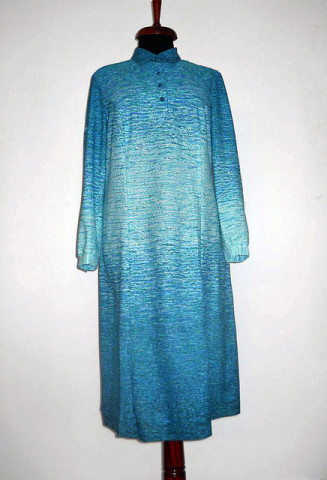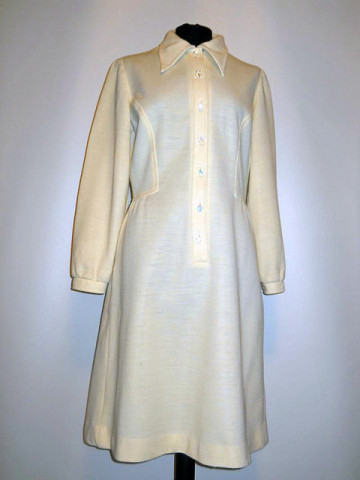Rochie vintage Trevira anii 70
Descriere
Rochie din casha (45% lână și mohair, 55% poliester), în stilul anilor 40, neagră. Se închide pe bust (până în talie) cu nasturi îmbrăcați în același material. Se leagă în talie cu o curea din același material, cu cataramă, trecută prin găici. Căptușită cu poliester negru.
Măsuri: gât - 62, bust - 98, talie - 88, șold - 102, lungime - 107, lungime mânecă - 59. Pe etichetă: 44. Echivalare: M-L.
Brand: Trevira - Erina/ Italia.
Despre: "The Trevira brand started life as a linguistic error and in truth this happened long before 1956, the year it was first used as a brand of polyester fibre. “Trevira” had already made its entry into the trademark register in 1932. This was at the hands of Adolf Kämpf, plant director of what was then an artificial silk factory in Bobingen, near Augsburg. Professor Paul Schlack who was himself plant director from 1946-1947, recalls: ”Kämpf wanted to take the trademark from the Latin name of the city of Augsburg, but actually this was not Augusta Treverorum, as he thought, (which is Trier), but Augusta Vindelicorum. “While the mistake was cleared up, the trademark stuck – its use changing with the times. Sometimes it was not used at all, until at the start of the fifties Schlack claimed it for the factory in Bobingen for the process of approving “second-hand goods”. Ultimately it provided the name for the new polyester fibre from Hoechst in 1956". (Sursa: trevira.com).
Stare: excelenta.



